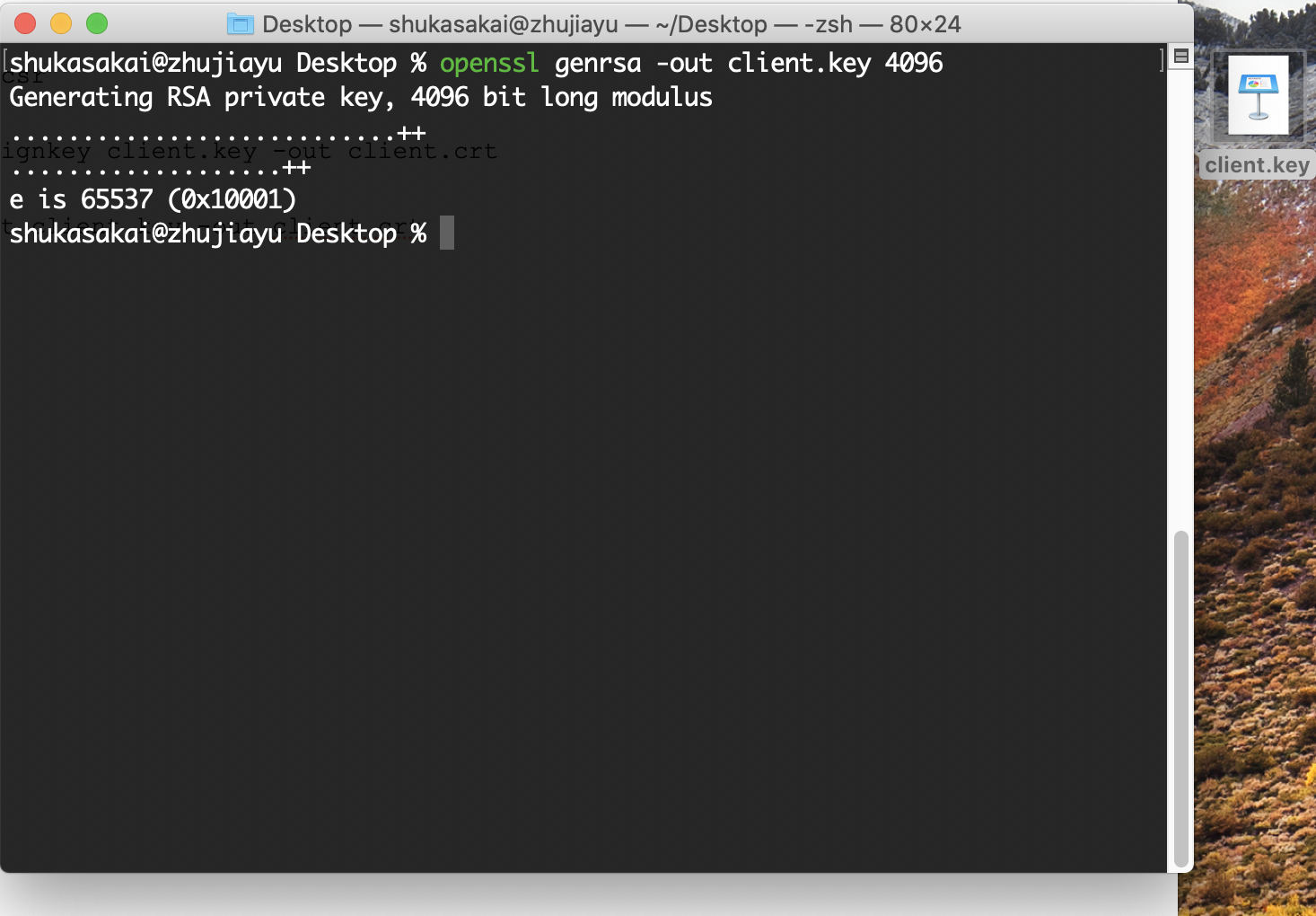

- #R openssl for mac install
- #R openssl for mac update
- #R openssl for mac software
- #R openssl for mac plus
- #R openssl for mac free
For many software products and markets the latter group of users is the largest. A major advantage of the "FIPS capable" OpenSSL is that vendors can ship the same software to all of their customers, those who want the FIPS 140-2 validated cryptography and those who do not.
#R openssl for mac plus
The FIPS module was designed from the beginning to be used in conjunction with OpenSSL in a configuration we call the "FIPS Capable" OpenSSL, where the FIPS module is embedded in the OpenSSL shared library (or library plus application as an executable file) and all relevant cryptographic operations are seamlessly diverted to the FIPS module when the FIPS mode of operation is enabled. Set VCcompiler="C:\Program Files (x86)\Microsoft Visual Studio 9.0\VC" Readme.txt - Building FIPS Capable OpenSSL -Įdit RunMe.bat and tweak these variables:
#R openssl for mac free
OpenSSL files can be unzipped using 7z.dll and 7z.exe.Īvailable here: Wget.exe is a free network utility to retrieve files from the Internet.Īvailable here: /packages/wget.htm The bin sub-folder should have these files: 7z.dll To begin the OpenSSL build, create your local folder, for example C:\Work\OpenSSL-Builds\bin Import Libs/Dlls are created here: C:\Work\OpenSSL-Builds\openssl-1.0.2d-64\out32dll Static Libs are created here: C:\Work\OpenSSL-Builds\openssl-1.0.2d-64\out32 If all goes well, you'll have an output folder called "OpenSSLoutput-1.0.2d" which contains the FIPS OpenSSL files. Bash looks for it, and reads and executes commands in it, at user’s every logon.I was frustrated too with building OpenSSL for Windows, so I created the batch files below to build it with just a click.

bash_login) is something similar to autoexec.bat on Windows. Note : For a software via brew to be “keg-only” means it is installed in /usr/local/Cellar but not linked into places like /usr/local/bin, /usr/local/lib. I wish you installations funnier than this one 😁 Now I need some beer 🍺 And I wrote it down here to be a reference for everyone. At least that’s the common hope 😊 This was not the funniest thing I did so far, but it was necessary. That’s it! Now OpenSSL library should be reachable from any app. Since libssh2 is not keg-only, it will be readily accessible without adding it to any environment variable.
#R openssl for mac install
I didn’t need it but here it is: brew install libssh2 #or# brew upgrade libssh2
#R openssl for mac update
Abort trap: 6” or “PlatformNotSupportedException”, you may have to install or update libssh2. If the app gives an error like “No usable version of libssl was found. But I’ve read that on some systems apps still cannot find OpenSSL library. profile file to eliminate logoff & logon at this time: source ~/.profile And we’ll use below command for this, just replace the …/lib path with the one you have. We want this library path to be added to aforementioned environment variable at every user logon. To have the library path we’re looking for, just append /lib to it. The path in the red rectangle at above screenshot is the path where OpenSSL is installed. Run the command “brew info openssl” again: But if you want this for some reason, follow the instructions below, otherwise jump to the Making OpenSSL Reachable section. OpenSSL doesn’t need being here to be reachable. This command prints the SSL library which exists first in the PATH environment variable, being LibreSSL or OpenSSL at some version. So, install or update if necessary: brew install openssl #or# brew upgrade opensslĬheck if the system sees the library directly: openssl version -a If it’s not installed, you’ll see “Not installed” among the first few lines of output. Installing OpenSSLįirst, open a terminal, and see if OpenSSL is already installed: brew info openssl And I also avoided symbolic linking (ln -s) and install_name_tool, since for me those are last options. I tried to write complete and generalized instructions to be as applicable to more systems as possible. Here is my journey of installing OpenSSL 1.1.1g on macOS Catalina (10.15.6) and making it reachable by my. Installing OpenSSL library on macOS seems easy at first, but in practice can be a real pain in the back.

Furthermore, cross-platform cryptography in.

Whether you are building apps for just macOS or for cross-platform, if your app is using OpenSSL for crypto-works, you will have to install OpenSSL library since macOS ships with LibreSSL. Installing OpenSSL library on macOS Catalina


 0 kommentar(er)
0 kommentar(er)
